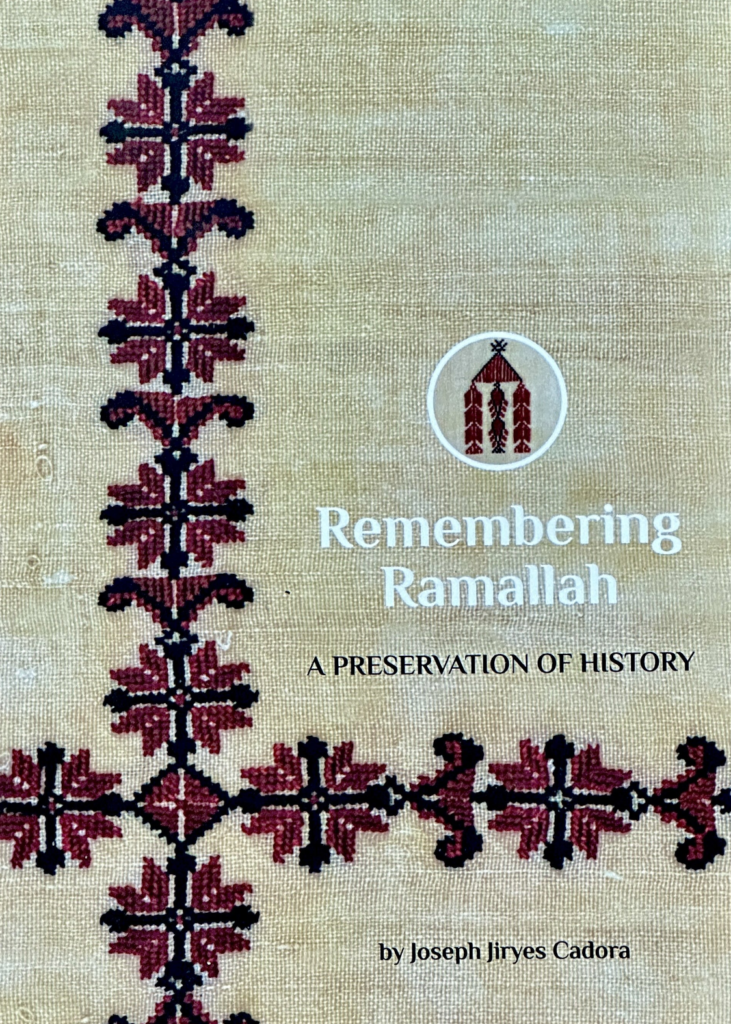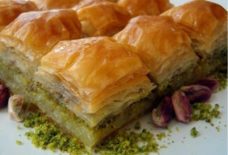Resisting Erasure

By: Samira Rafidi Meghdessian with Joseph Eric Cadora / Arab America Contributing Writers
When I first picked up A History of the City of Ramallah (its original Arabic title), it had been on my parents’ bookshelf for years and was known simply as Ammo (Uncle) Joseph’s book. Many years later, I was inspired to translate it into English after meeting a guide in Ramallah who used it extensively to describe the town’s rich history.
The guide told me he wished it were available in English so diaspora Palestinians who didn’t speak Arabic could learn the history. I loved the idea, and after discussing it with the author’s eldest son, my cousin Dr. Frederic Cadora, we agreed that I would research and translate it. It is not the only book on Ramallah. Still, it is unique for its firsthand accounts and genealogies, upon which many authors have bolstered their histories, extensively citing it as a primary source in their bibliographies and footnotes.
Remembering Ramallah: A Preservation of History (its new title in translation) is a historical memoir of place. The author, Joseph Jiryes Cadora (1893-1958), brings the town’s history to life through genealogies of clan migrations from the Crusades to firsthand accounts of the town’s successful resistance to Israeli invasion and occupation in 1948. Cadora is both a protagonist and a witness to the town’s history.
This duality of perspective makes the book a uniquely compelling and richly detailed read. But what moved me most about the book is Cadora’s irrepressible love and care for Ramallah’s inhabitants, history, clans, trials and tribulations, traditions, and customs. The book is replete with examples, including numerous photographs from the time, of how politics and culture are interwoven together in Ramallah’s everyday life and expressed through its unique forms of art, dress, cuisine, dialect, commerce and even social administration—one illustrative photo is of the Palestine delegation to the Arab Women’s Conference in Cairo in 1944, where Cadora’s wife, my maternal aunt, Nameh Balat, presented traditional Ramallah embroidery to the Queen of Egypt.
Cadora was a quiet man, but he was a pathbreaker. He immigrated to the United States and studied pharmaceutical science at Massachusetts College of Pharmacy in Boston in the early 1900s. He returned to Ramallah after serving in the 26th American Army Engineers Water Supply Regiment during World War I. Upon returning to Ramallah after the war, he opened a new pharmacy, only the town’s second. I fondly remember him wearing a white gown and my fascination watching him prepare medicines by crushing and mixing ingredients in a small marble bowl.
In 1943, he began serving as mayor of the town and continued journaling his daily experiences, which he had begun 30 years earlier when he first arrived in the US. In the book one learns how, as mayor, he Helped steer Ramallah’s development; building schools, a hospital, and a public garden. But Cadora also lived through a transformational time in history during which he chronicles the town’s successful resistance to the violent occupation of Palestine by Zionist paramilitary forces. A large part of the Cadora family land was used to house refugees who had been ‘ethnically cleansed’ from Lydd and Ramleh. To this day, this land is known as the Cadora Camp.
But Ramallah was never far from his thoughts. Soon after landing in New York, he transcribed the handwritten notes he had brought back with him into a book, which he printed in Arabic in 1954 at the now-defunct Al Hoda Printing Press.
Palestinians are prolific in writing about our life experiences and how much our culture, or Al Turath, means to us. Al Turath is something Palestinians have always preserved, enlivened, and bequeathed, be it through poetry and stories, food and textiles, or family histories, even including family trees of the original Ramallah clans or Hamayel, to which many Ramallites can trace their ancestry.
As such, Remembering Ramallah: A Preservation of History is an act of resistance to erasure. It is a testimony of history and the preservation of a culture that is continually under threat, today as never before. Our best defense against erasure has always been sharing our ways of life and cherished connection to the land with others. Now more than ever, it is critical to educate people about our living culture and expose the big lie that labors to suppress, subjugate, and destroy us as a People. To that end, consider sending this book to your elected representatives to put the lie to the claim that Palestine was a land without people and to anyone else whom you think would benefit from tales both beautiful and harrowing that the book so richly conveys about our beloved Ramallah.
“Remembering Ramallah” can be purchased at this link.
Visit Arab America’s blog here!








